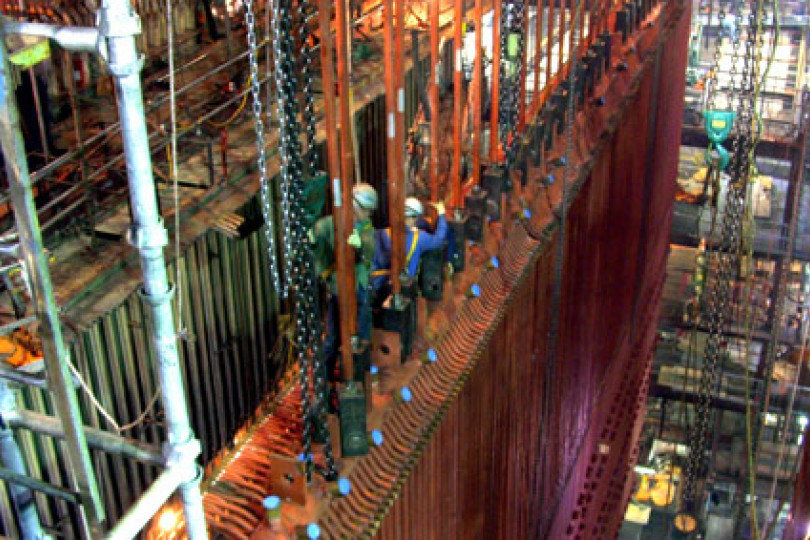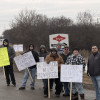Boiler conversion to reduce nitrogen oxide emissions by 85 percent
MEMBERS OF LOCAL 169 (Detroit) have completed the conversion of an 820-megawatt boiler to burn 100 percent low-sulfur, western coal at Consumers Energy’s J.H. Campbell Generating Complex in Port Sheldon, Mich.
During the outage’s peak in January, more than 800 Boilermakers worked on the Campbell Unit 3. In all, 1,400 building trades members, their contractors and support staff, labored on the boiler’s conversion from Sept. 2006 through April 2007, putting in a total of two million man-hours at the Lake Michigan shoreline facility.
The modifications at the plant are expected to result in an 85 percent decline in nitrogen oxide emissions and a 20 percent drop in the sulfur dioxide emission rate.
The 260-megawatt Unit 1 at the Campbell Plant has already been configured to burn western coal, and the 360-megawatt Unit 2 can burn 40 percent western coal. The installation of future pollution controls on Units 1 and 2 “will be determined by government policies and what makes economic and environmental sense,” said Dennis McKee, a Consumers Energy spokesman.
According to McKee, the modifications to reduce emissions from Unit 3 are unprecedented in scope for any plant in the utility’s fleet — and for that matter, the rest of the country. “We expect the rest of the industry will emulate the work we’ve done here,” McKee said.
Jim Kaffenberger, a Local 169 Assistant Business Manager, said Consumers Energy was “excellent to work with. They went out of their way to give us everything we needed. They even heated the building, which was a really big plus for us.”
L-169 installs SCR equipment
AS PART OF a three-year, $450 million plan to reduce the plant’s nitrogen oxide emissions, members of Local 169 installed selective catalytic reduction (SCR) equipment to the Campbell Unit 3.
The SCR technology allows a small amount of ammonia to be injected into flue gas leaving the boiler and entering a catalyst. The chemical reaction converts ozone-contributing nitrogen oxide to nitrogen — which makes up about three-fourths of the air in nature — and water vapor.
“This was an extremely large outage,” said Rich Kasper, the project manager who handled the contract labor force for Consumers Energy. “Converting the boiler to burn western coal was the largest project we’ve ever undertaken at this site beyond initial construction of the three power plants.”
The project was led by APCom Power/Alstom Construction. The Unit 3 outage began in the last week of September, and employment for the outage peaked in late January. Work on the boiler and related plant equipment was completed in April, with testing and analysis occurring in May.
Highlights of Boilermaker work on the project include: completion of the new SCR superstructure and supporting equipment; replacement of boiler tubes; replacement of induced draft fans; and installation of a new boiler economizer and re-heat section.
Much planning went into the outage, Kasper said, and when it came time to do the work, “hardhats” usually toiled 24 hours in two shifts.
Overall the project “was a great campaign,” Kasper said. “We did it with tremendous attention to safety, and it was close to being on time. We’ve had a lot of success stories, but we’ve learned lessons, too.”
Dan Malone, site manager at the Campbell Complex, said the quality of work from the trades “is very high — craft workers and the Consumers’ site staff interacted very well together. They were a very easy group to manage, and the work they’ve done has brought about a very high quality, reliable unit.”
Source: Marty Mulcahy, Managing Editor of the Building Tradesman newspaper (Michigan Building and Construction Trades Council).






